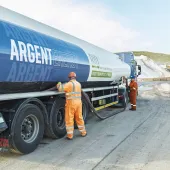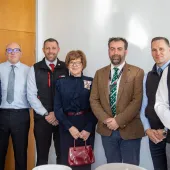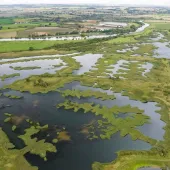Banks Mining complete Ponesk and Spireslack restoration

New lease of life for two of Scotland’s largest abandoned surface coal mines
WORK on the restoration of Ponesk and Spireslack opencast coal mines, near Muirkirk, in East Ayrshire, has been completed by Banks Mining.
Following the excavation and re-profiling of more than 6 million tonnes of rock and soil, the two sites have been transformed five years after they were left abandoned when operator, Scottish Coal, went into administration in 2013.
In just over two years a 15-strong, predominantly local team, from Banks Mining have completed the challenging restoration, working on behalf of East Ayrshire Council and the Scottish Mines Restoration Trust (SMRT) – an independent, non-profit making organization set up to facilitate the restoration of abandoned surface coal mines.
New footpaths and tracks have been created to provide improved public access to the site. As a result of the team’s expert work, what was a huge ‘ugly scar’ on the landscape of the Muirkirk/Glenbuck Valley, has now been transformed and sits in sympathy with the wider landscape of the area – safely accessible to the local community.
Michael Keane, head of planning and economic development at East Ayrshire Council, said: ‘We are making steady progress in terms of restoration across all of the remaining opencast sites, and the completion of work at Ponesk and Spireslack is welcome news.
‘Given the scale of the works required to be undertaken, Banks Mining have done a commendable job in creating a landscape which over time will develop in keeping with its surroundings. Our primary objective is to ensure these sites are secured and made safe for the public to access and this has been achieved.’
Jim Donnelly, operations director for Banks Mining, said: ‘Looking at the site now you’d be hard pushed to envisage how it was when we took it on. It has taken an extraordinary effort by our highly experienced team to take an unsightly derelict surface mine that had been an eyesore for many years and transform it into what we see today.’









